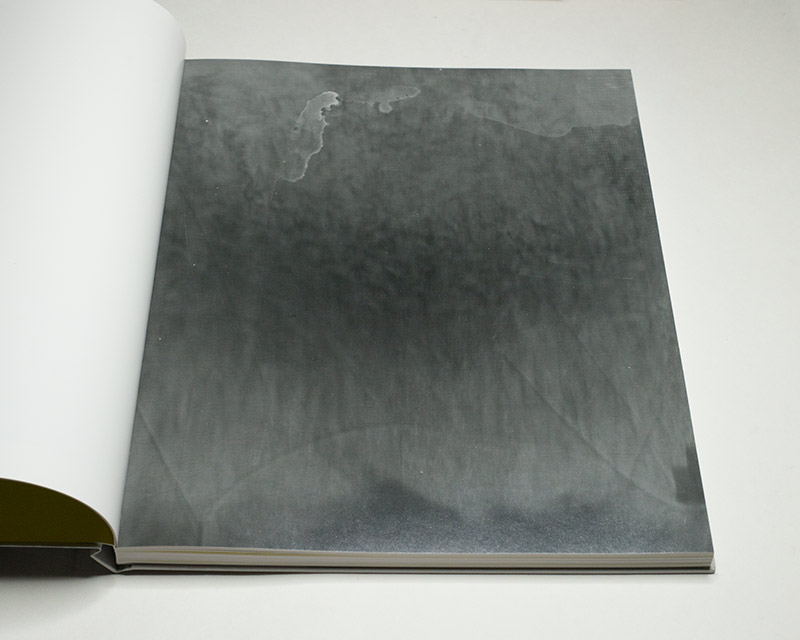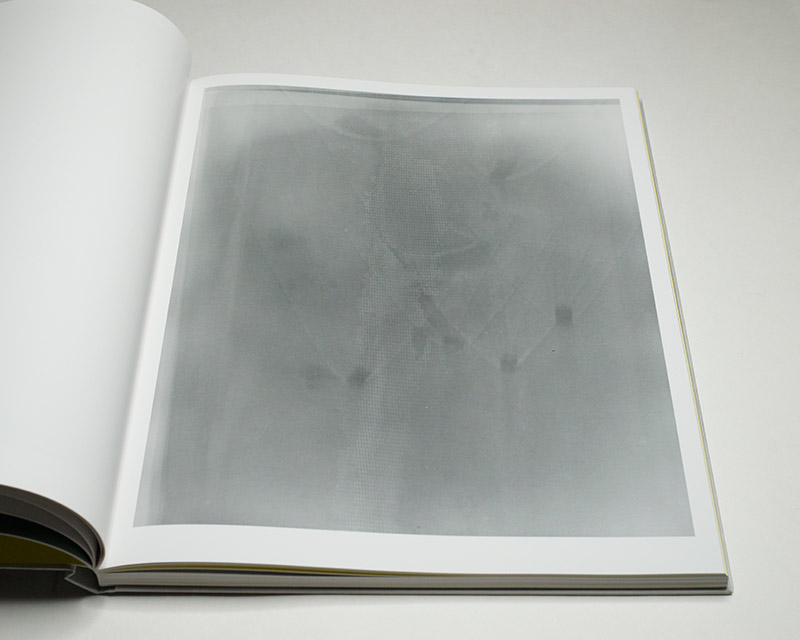I don’t want to know how Lucy Raven’s Socorro! shadowgrams came about. I have my reasons. To begin with, knowing about the details of the underlying process collapses the images’ possible meanings and their impact.
For better or mostly worse, the world of photography’s insistence on overemphasizing the details of process often reduces such images to less than what they could be. Photography is a visual medium, and we ought to be able to engage with its imagery at that level — instead of jumping to explanations for why things look the way they do.
If photography really aspires to be a form of art, then photographers and anyone else involved in the field will have to learn to engage with photographs accordingly. This means to stop asking for explanations of craft/process (or, for photographers, to stop providing them) and to talk about the pictures on a purely aesthetic level. Not: why does this look the way it looks? Instead: what is this doing with me? What am I seeing, what am I feeling? And what might these two mean for me?
There also is the fact that I studied physics, and I am familiar with imagery that is similar. This is where my own life experience might differ from many other people’s: I am able to read many images that arise from a physics background because I was trained to do so. But I don’t work in that field any longer, and I do not want to read these images in a scientific fashion, regardless of their possible scientific background.

Socorro! is a relatively large book (27.9 x 36.3cm or 11″ x 14.3″). I’m immediately thinking that the images in the book are facsimiles of the originals, and I find that interesting. While a photobook’s viewer always is only able to see a translation of its source images, typically photobook makers intend to make that translation as accurate as possible. By “translation” I here mean that you try to get images that were printed using ink to look like images that arose from traditional photographic materials (silver-gelatin paper).
When I was much younger, I went to a concert where the band sold t-shirts that stated “The songs sound all the same”. On the one hand, that obviously wasn’t true. On the other hand, it kind of was (which created part of the appeal The Wedding Present). I suspect that a casual viewer will react to the images in the book in the same fashion: the images look all the same. It’s true, kind of; but it absolutely isn’t.
I find that interesting, too, and it is this fact that had me want to write about the work. Not so long ago, I started to appreciate music that is quite abstract and that broadly speaking falls into the genre of ambient music. It might not surprise you that when I listened to The Wedding Present, I would have considered such music boring. But it’s not really boring at all — quite on the contrary. Given that I don’t write about music but about photography, Socorro! seemed like a perfect opportunity to understand and write about images that — and this is a terribly superficial comparison — are the equivalent of Martyna Basta’s music (I’m thinking in particular of Making Eye Contact With Solitude).
If you wanted to describe the images in Socorro! you might be tempted to reach for visual comparisons. Some of the images look like sections of a stained concrete wall whose material has deteriorated with age. Others resemble what out-of-focus X-ray images might look like (even though I have never seen one).

There are images that feature cones with objects at their apices, or rather their shadows. Here, I can’t help but think of images of a jet breaking the sound barrier, producing a shock wave around it. But I am also compelled to think of the imagery produced by a US newspaper that tried to visualize the effect of bullets from military-grade weapons tearing through the human body. And then there is a photograph by Shomei Tomatsu that I can’t help but think of as well.
Some images are pitch black and feature only a few dust specks sprinkled on them. There’s the occasional Gerhard-Richter-is-squeegeeing-a-canvase effect, and some images remind me of what happened when Idris Khan took a large number of Bernd and Hilla Becher’s photographs of water towers or gas tanks and layered them on top of each other.
The less detail you have, the more you’re able to associate with the small amount of information given to you. I find this interesting. It points at something Siegfried Kracauer wrote: “If […] one has the patience, the sort of patience specific to legitimate boredom, then one experiences a kind of bliss that is almost unearthly.” I suspect I shouldn’t use the word “boredom” in a review. But I might as well point out the richness of experiences discussed in Documents of Contemporary Art: Boredom. I feel that the richness of those experiences is mostly underappreciated in the world of photography; this book brings me close to them.
Maybe you have experience with meditation, and you’re able to connect with these images in such a fashion. This is not to say that the images in Socorro! are meditative (they’re also not boring in case that wasn’t clear from the preceding). That’s such a terrible word to use to describe a piece of visual art (much like “poetic”). The images are not meditative. But you could engage with them in such a fashion that your experience might bring up aspects of meditation.

I remember that Ludwig Wittgenstein once said something to the effect of that when he went to a museum, he preferred to just look at just one painting. Unfortunately, I am unable to locate the actual quote online. But let’s pretend that he said that. I think that approach would be very good for the book. In fact, that’s how I engaged with it ever since I got it in the mail. I open it at some random location, and then I spend time with one of its images, however long I feel is right at that moment. Sometimes, it’s a short moment. Sometimes, it’s quite a bit of time.
I think that this approach might help those who struggle with the images. Unless you’re already attuned to this kind of ambient imagery, leafing through the book might tempt you to compare and contrast. You don’t want to compare and contrast these images any more than you want to come to any conclusions. You just want these images to be, and you want your thoughts and feelings about them to be. That’s enough.
It is a gorgeous book. Like I said, it’s rather large, and as is often the case with this publisher it’s very attractive. There are two sections that contain essays; these are printed on a bright yellow paper (a very different stock than the rest). I can’t say anything about the essays. I will read them once I feel that reading them will not spoil my ability to engage with the images.
Maybe I still can’t write anything coherently about these images. But I’m not sure that is a problem. If you’re an artist, you know about the importance of moving out of your comfort zone. As a viewer, you want to be able to do the same.
I know that I now see a little differently, and I experience photography a little bit differently. Not being able to write about it perfectly has me think that I’m still in the spot where the engagement is freshest. I know it will not last; for now I will cherish these moments.
Recommended.
Socorro!; photograms by Lucy Raven; essays by Pamela M. Lee and David Levi Strauss; 120 pages; MACK; 2023
If you enjoyed this article, please consider subscribing to my Patreon. There, you will find exclusive articles, videos, and audio guides about the world of the photobook and more. For those curious, there now is the possibility of a trial membership for seven days.
Much like journalism, photography criticism involves a huge investment of time and resources. When you become a subscriber, you not only get access to more of my work. You will also help me produce it (including the free content on this site).
Thank you for your support!
